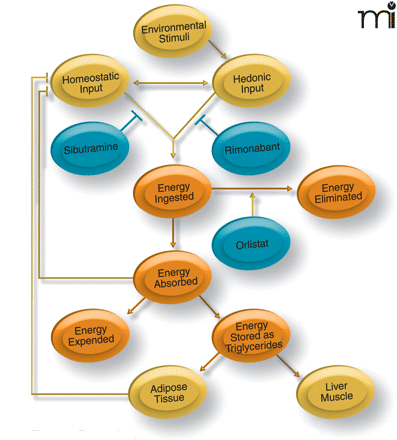
- Institution: Stanford Univ Med Ctr Lane Med Lib/Periodical Dept/Rm L109
- Sign In as Member / Individual
The Obesity Epidemic: Pharmacological Challenges

Energy homeostasis and the action of currently available anti-obesity drugs sibutramine, rimonabant, and orlistat. Orange arrows indicate pathways of energy flow. Yellow arrows indicate positive (with arrowheads) and negative (blunt arrows) regulatory pathways. Wholesale environmental change by a societal approach is theoretically preferable but so far seems impracticable. Presently licensed medical treatments such as orlistat, acting in the gut to impair fat absorption, and sibutramine and rimonabant, acting in the CNS to impair appetite, only cause modest loss of weight, which is not sustained once treatment is discontinued. Moreover, there are significant side effects, which may limit their applicability. The only effective long-term intervention at present is bypass bariatric surgery, but this is expensive, incurs a significant morbidity and mortality, and deliverability is limited by the availability of suitable surgeons and support services. New pharmacological approaches to the treatment of obesity are therefore desperately needed.


